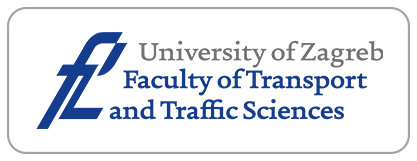Megaregional Passenger Transportation Hub Location Problem Considering Congestion Effects

Downloads
The need to make effective plans for locating transportation hubs is of increasing importance in the megaregional area, as recent research suggests that the growing intercity travel demand affects the efficiency of a megaregional transportation system. This paper investigates a hierarchical facility location problem in a megaregional passenger transportation network. The aim of the study is to determine the locations of hub facilities at different hierarchical levels and distribute the demands to these facilities with minimum total cost, including investment, transportation, and congestion costs. The problem is formulated as a mixed-integer nonlinear programming model considering the service availability structure and hub congestion effects. A case study is designed to demonstrate the effectiveness of the proposed model in the Wuhan metropolitan area. The results show that the congestion effects can be addressed by reallocating the demand to balance the hub utilisation or constructing new hubs to increase the network capacity. The methods of appropriately locating hubs and distributing traffic flows are proposed to optimise the megaregional passenger transportation networks, which has important implications for decision makers.
Downloads
Hagler Y. Defining U.S. Megaregions. America 2050; 2009. Available from: https://rpa.org/uploads/pdfs/2050-Paper-Defining-US-Megaregions.pdf
Yu J, et al. Cluster-based hierarchical model for urban transit hub location planning: Formulation, solution, and case study. Transportation Research Record. 2009;2112(1): 8-16. DOI: 10.3141/2112-02
Contreras I, Fernández E. General network design: A unified view of combined location and network design problems. European Journal of Operational Research. 2012;219(3): 680-697. DOI: 10.1016/j.ejor.2011.11.009
Rodrigue J-P, et al. The Geography of Transportation Systems. Hofstra University, Department of Global Studies & Geography; 2020. Available from: https://transportationgeography.org
Farahani RZ, et al. Hierarchical facility location problem: Models, classifications, techniques, and applications. Computers & Industrial Engineering. 2014;68: 104-117. DOI: 10.1016/j.cie.2013.12.005
Farahani RZ, et al. Hub location problems: A review of models, classification, solution techniques, and applications. Computers & Industrial Engineering. 2013;64(4): 1096-1109. DOI: 10.1016/j.cie.2013.01.012
Narula SC. Hierarchical location-allocation problems: A classification scheme. European Journal of Operational Research. 1984;15(1): 93-99. DOI: 10.1016/0377-2217(84)90052-3
Zarrinpoor N, Fallahnezhad MS, Pishvaee MS. The design of a reliable and robust hierarchical health service network using an accelerated benders decomposition algorithm. European Journal of Operational Research. 2018;265(3): 1013-1032. DOI: 10.1016/j.ejor.2017.08.023
Marianov V, Serra D. Hierarchical location–allocation models for congested systems. European Journal of Operational Research. 2001;135(1): 195-208. DOI: 10.1016/S0377-2217(00)00314-3
Grove PG, O'Kelly ME. Hub networks and simulated schedule delay. Papers in Regional Science. 1986;59(1): 103-119. DOI: 10.1111/j.1435-5597.1986.tb00985.x
Elhedhli S, Hu FX. Hub-and-spoke network design with congestion. Computers & Operations Research. 2005;32(6): 1615-1632. DOI: 10.1016/j.cor.2003.11.016
Gillen D, Levinson D. Full cost of air travel in the California corridor. Transportation Research Record. 1999;1662(1): 1-9. DOI: 10.3141/1662-01
Elhedhli S, Wu H. A Lagrangean heuristic for hub-and-spoke system design with capacity selection and congestion. INFORMS Journal on Computing. 2010;22(2): 282-296. DOI: 10.1287/ijoc.1090.0335
De Camargo RS, et al. Multiple allocation hub-and-spoke network design under hub congestion. Computers & Operations Research. 2009;36(12): 3097-3106. DOI: 10.1016/j.cor.2008.10.004
De Camargo RS, de Miranda Jr G, Ferreira RPM. A hybrid outer-approximation/benders decomposition algorithm for the single allocation hub location problem under congestion. Operations Research Letters. 2011;39(5): 329-337. DOI: 10.1016/j.orl.2011.06.015
De Camargo RS, Miranda G. Single allocation hub location problem under congestion: Network owner and user perspectives. Expert Systems with Applications. 2012;39(3): 3385-3391. DOI: 10.1016/j.eswa.2011.09.026
Alumur SA, et al. Modeling congestion and service time in hub location problems. Applied Mathematical Modelling. 2018;55: 13-32. DOI: 10.1016/j.apm.2017.10.033
Özgün-Kibiroğlu Ç, Serarslan MN, Topcu Yİ. Particle swarm optimization for uncapacitated multiple allocation hub location problem under congestion. Expert Systems with Applications. 2019;119: 1-19. DOI: 10.1016/j.eswa.2018.10.019
Alkaabneh F, Diabat A, Elhedhli S. A Lagrangian heuristic and GRASP for the hub-and-spoke network system with economies-of-scale and congestion. Transportation Research Part C: Emerging Technologies. 2019;102: 249-273. DOI: 10.1016/j.trc.2018.12.011
Lofberg J. YALMIP: A Toolbox for Modeling and optimization in MATLAB. In: Proceedings of 2004 IEEE International Conference on Robotics and Automation, New Orleans, LA; 2004. p. 284-289.
Huang HJ, et al. Transportation Issues in Developing China's Urban Agglomerations. Transport Policy. 2020;85: A1-A22. DOI: 10.1016/j.tranpol.2019.09.007




















